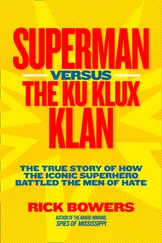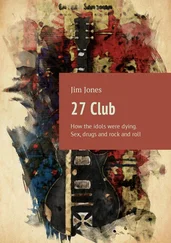None of this publicity was enough to halt the trial, any more than the irregularities of the inquest had been. Corder had been barred from attending by the coroner, who claimed that ‘he did not believe that the accused had any right to be present [at an inquest]; he never knew an instance of the kind’. It was explained to the coroner at the trial that, on the contrary, it was an obligation of the court that the accused should hear the depositions against him. Yet his abrogation of Corder’s rights did not appear to be any bar to him taking part in the trial itself, in which he acted as a prosecuting counsel. *
It probably made no difference. James Lee, the Bow Street Runner, had found Miss Marten’s reticule in Corder’s study, together with a pair of pistols and a sword, which was proved to have been sharpened at Corder’s request just before the murder. Furthermore, letters from Corder to Miss Marten’s parents, claiming his ‘wife’ was with him in ‘our lodgings, in the Isle of Wight’, were read out, in which he told them how they had married in Ipswich and that she ‘unites with me for your wellfare [sic]’, together with an ominous ‘P.S. I think you had better burn all my letters.’ Corder put up a miserable defence. †He claimed that Miss Marten had left Polstead to hide a new pregnancy from her family. (Why? She had already had three bastard children.) Then he asserted that she had had some unspecified relationship with an unnamed man in London, and that when she reached the barn, ‘she flew into a passion, upbraided me with not having so much regard for her as the gentleman before alluded to’, and shot herself. Terrified to find himself with a body on his hands, he buried her. The stab wounds noted at the autopsy must have been made by a spade when the body was exhumed, he claimed.
This last is not as implausible as it sounds today. Post-mortems were still rudimentary (the first use of the term had only appeared a decade before). An initial post-mortem had decided that the ‘chief cause of death’ was ‘a [bullet] wound in the orbit [eye-socket]’, but after the remains had been re-interred, ‘It has been regretted that for the ends of justice, more time was not given for the inspection of the body, or that the inspection had not been minutely made,’ as on reflection a bullet through the eye was ‘little likely to be chosen for the perpetration of a murder of this deliberate character’. The body was therefore re-exhumed, and two stab wounds were now found, one between the ribs and one in the heart, both entirely unnoticed at the first PM. By the time the trial was under way, yet further thought had suggested that the silk kerchief Miss Marten had worn had been pulled ‘so tight upon the neck as to have produced death by strangulation’.
Corder was found guilty and sentenced to death. The Times was not sure which was more important, the verdict itself, or the speed with which the newspaper had reported it. ‘We yesterday morning, by extraordinary exertion, published the proceedings of the court up to the adjournment on the previous day, – or, in other words, gave in six closely printed columns the report of a trial which took place on the previous day at a distance of 72 miles from London, and which was not adjourned till eight o’clock in the evening,’ it boasted.
More sermons were immediately preached. On 17 August, the Revd Charles Hyatt of the Ebenezer Chapel, Shadwell, travelled to the Red Barn to deliver a sermon to ‘about 2,000 persons’, taking his text from Numbers 32:23: ‘Be sure your sin will find you out’, and using it to recycle the type of newspaper rumour familiar from the Thurtell case. When Corder was at school, Mr Hyatt told his congregation, ‘the depravity of [his] nature often displayed itself, by his constant habit of telling falsehoods, and by the depredations he committed upon his companions’; he had later formed ‘an acquaintance with a girl of very loose character’ and, as ‘the wages of her iniquity’, had supplied her with ‘peas and other articles from his father’s farm’. The sermon ended by warning ‘the peasantry’ against poaching, which Mr Hyatt stressed would lead to greater vices (presumably murdering women and burying them in barns).
That same evening, the Revd J. Pilkington preached from the same text at the Baptists’ Meeting House in Rayleigh, Essex, and at Bury St Edmunds the Revd George Hughes took a different text, but also preached on Corder. ‘A Suffolk Clergyman’ published An Address to My Parishioners and Neighbours on the Subject of the Murder lately committed at Polstead, in Suffolk, in which a certain amount of space was given to how the wages of sin lead only to death, while a great deal more was devoted to the details of Miss Marten’s murder. Furthermore, the clergyman had attended Corder’s final church service in gaol before his execution, a regular stop on the route to the gallows. The condemned was placed in a special, black-painted pew, while the coffin that he or she was shortly to fill stood in the centre of the chapel. The Suffolk clergyman evidently paid little attention to divine service that day, for he was able to describe Corder’s every gesture for his readers.
A novel, published together with a transcript of the trial, quickly appeared. This was ‘founded on fact’, the reader is assured, although it is an absolutely standard melodrama: there is the pure maiden, with her virtuous father, a model of ‘industry and frugality’; a gypsy fortune-teller; some smugglers; a gambler who in a Thurtell-ish moment ‘plucks’, or cheats, the Corder character; and a rejected suitor who returns having made a fortune in India. The author was probably the penny-blood writer Robert Huish (possibly together with the journalist William Maginn), who later wrote similar ‘true’ crime novels about James Greenacre and Maria and Frederick Manning (see pp.92–8, 157–82). *
The Times reported that by nine o’clock on the morning of the execution a thousand people had gathered at the scaffold in Bury St Edmunds. Three hours later this had swelled to 7,000. Unlike Thurtell’s, Corder’s death could not be mythologized. At the scaffold, claimed one broadside, he was ‘so weak as to be unable to stand without support’, and ‘he looked somewhat wildly around’ while he waited for the rope to be adjusted. In 1824, technical changes had been made to the scaffold, allowing adjustable chains which reduced delays while the hangman corrected the length of the rope. Even so, prisoners were still assessed only by height, not by weight, and some, in the phrase of the day, ‘died hard’. Corder was one of them. The hangman had to perform the ‘disgusting but necessary task, of suspending his own weight around the body of the prisoner, to accelerate his death’. Even then, it took another eight minutes for him to die.
Not everyone was disturbed. Physical remains were treated with a pragmatism that has since vanished. During the trial, the surgeon had ‘produced the skull of the deceased’, which was handed round to the jury members so they could see the fracture for themselves. A broadside commemorated this moment: ‘They brought her heart, her scull [sic], and ribs,/And showed before his face …’ Mr Marten, testifying to the finding of his daughter’s body, merely said he had ‘put down a mole spike into the floor … and brought up something black, which I smelt and thought it smelt like decayed flesh’. For those who may have missed these details in the newspapers and broadsides, Corder’s body itself was soon on display. After the execution it was transported to the town’s Shire Hall, where ‘Two incisions were made in the breast, the skin taken of [sic], and the muscles exposed to view.’ Then the body was displayed on a table in the middle of the Court, ‘quite naked, with the exception of the trowsers, shoes, and stockings’. *‘Many thousands’ were admitted. For those who couldn’t be there, ‘two eminent artists, Mr. Mizotti of Cambridge and Mr. Child of Bungay’, made plaster casts. The following day the body was taken to the County Hospital and wired up to a battery to make it twitch in a demonstration of galvanic power, while the phrenologists, quack scientists who read character from the shape, or bumps, in the skull, competed for a cast of the head. Only after that did dissection proceed, for the benefit of the medical students. The bones ‘having been cleared of the flesh’, they were ‘re-united by Mr S. Dalton, and the skeleton is now placed in the Suffolk General Hospital’ (one visitor was reported to be Mr Marten himself). ‘A great portion of the skin has been tanned, and a gentleman connected with the hospital intends to have the Trial and Memoirs of Corder bound in it. The heart has been preserved in spirits.’ Many years later the pickled scalp was displayed by a leather-seller in Oxford Street. †
Читать дальше












